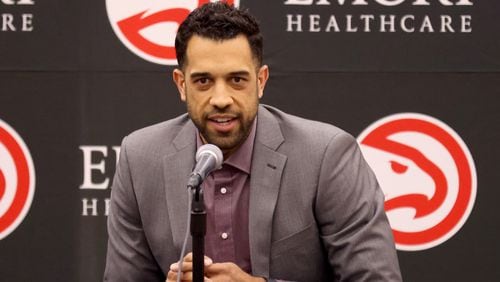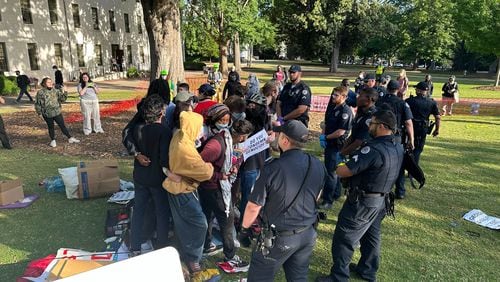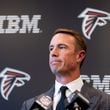PHILADELPHIA — The Hawks remained quiet by the time Thursday’s trade deadline rolled around but plenty of thought went into why. Though the team sits at 22-29, the Hawks have their eyes set on the long term and setting a foundation that could lead to perennial success.
While some teams may opt to move veterans to teams already in contention, Hawks general manager Landry Fields told reporters on a Zoom call Friday morning that he had no interest in tanking.
“’Making our team worse’ is language that I would never use around our office,” Fields said. “I think that a competitive spirit is always gonna be at play. And that’s always going to be subjective. Maybe to you, we got worse. But to me, we got better.
“I’m not interested at all in anything that’s like tanking or like anything of that type definition, right now. Because that’s always a tricky thing, and I understand when teams have to do that, they have to do that. But I still think that there’s this component of your ‘how’ and your process and again, the competitiveness that you need to operate by daily regardless of the talent level that you have.”
Since deals discussed among potential trade suitors did not benefit the Hawks long term, they stood pat and will move forward with the roster as currently constructed.
Here are some answers to important questions that Fields provided to reporters.
Answers have been edited for brevity and clarity.
On why they did not make a move.
A: It’s been a lot these last few days. I think where I would start, is just super proud of our group. The amount of conversations and debates and long nights that we had this past week, and just our ability to dialogue was really helpful and was really good for us. And obviously because everyone’s all thinking or wondering or asking themselves the same things, we didn’t do anything at this deadline.
And for us, what we really wanted to lean into was continued focus on our process, continued focus on development. And with any sort of concept that came in, it’s not just the short-term results or the short-term goals, I should say, that we’re interested in. It’s long term. So with anything, understanding the second- and third- and fourth-order consequences is very, very important to us because as we’re navigating this league, this space, new cap environment, particular contracts, like all the things and considering all things, there’s a lot of nuances and complexities that go into that, as well as the guardrails, that we call them, with our own DNA, like what is important for us. …
And I think another part of this whole equation, which is not the biggest factor as to why we didn’t do anything, but there are certain games over the last few weeks that have been really important for us and not just our team but like individuals, right? Like we’ve seen an uptick with Onyeka (Okongwu). We’ve seen an uptick with Jalen Johnson. We’ve seen an uptick with Saddiq Bey, and I can go right down the line even down to (the G League team in) College Park where, Kobe Bufkin is developing extremely well in that environment.
On what benchmarks they’ve put in place to direct their next moves.
A: It’s the measurements. It’s the things that we value. At the end of the day. Some of that stuff is tangible. Some of it is intangible. Like we’ve talked a lot about having a competitive spirit. We talk a lot about being unselfish, being connected and unified, loving your craft and owning it. Those are things that have certain indicators that you can evaluate. They’re a little harder to measure, for certain. ...
When you start to see some of those first fruits of it, it’s really exciting. Like, watching Onyeka the last few games has been really important for us, just to see how he’s able to switch out on a Jayson Tatum and show some defensive versatility and show the aggression to go get those boards. Like that all matters to us. ...
So you never want to get caught up in “resulting.” But you do want to see all the actions that, or prior to that, where if you were to look at them over a long period of time, you’d be net positive.
On balancing how the market values a player versus how they fit the roster long term.
A: I’m less interested in maximizing just a player’s value in order to make a move for a different player. That is a part of any sports business, and I certainly understand that. But that’s also kind of not totally in your control. Like, if a player goes down with an injury or something significant, what does that do for a player’s value? That to me, is not as important as placing a value on going to a Dejounte (Murray) or a Jalen or a Trae Young and saying, “Hey, here are the areas in which we can continuously improve upon.”
Value and all that stuff, that’ll take care of itself.
On if the roster is constructed around a particular player or players.
A: So, this roster is more constructed around the things that we feel are important rather than any one particular point.
On if this group’s performance in the Play-In Tournament or playoffs puts pressure on them to make bigger moves.
A: I’m sorry if I sound like a broken record. It’s really it’s a good question. We would love to go as far as we possibly can into any given season. I’d be particularly interested in well, how did we get there? How much can you rely on luck in that particular moment?
I don’t want to get caught up in a term that was used before “resulting,” right?
If you win 10 games in a row, does that make you a great team? Not necessarily if you lose 10 games in a row? Does that make you a bad team? Not necessarily. What was it that ultimately led to us being in a position of the playoffs, of the second round, of the conference finals, of the finals, right? That’s really important for us and that takes a lot of a deep dives.
On Fields’ definition of long term.
A: For me, anytime you talk about long term, it’s just talking about do you have a big-enough sample size based off what that is? There are certain measurements in any analytics model that will tell you OK, 100, 200, 300, 400 possessions of anything, like that’s a big-enough sample size for you to make an informed decision on that. To get caught up in one year, two years, three years, it is hard to say, I’ll just be honest.
On the sample size of Young’s and Murray’s pairing.
A: It’s a really good question, and I loved how you framed it. Like sample size is getting larger and larger and larger. And assuming you’re looking at specific lineups in defensive and offensive ratings, which can always be debated, as well, yeah, you’re starting to see that more and more. And yeah, I can’t lie to you; the numbers speak for themselves on that. But we’re also interested in well, let’s say they’re on the court together and it’s based off the numbers, it’s not working out. Well, why is that? What are things that we can do for them in a development aspect to make it look more like the on/off lineups that I’m assuming that you’re looking at.
On Fields’ confidence that the pairing with Young and Murray will work.
A: I think that those guys are competitors. I think that at the end of the day, they want to do what they need to do to win. And I would bank on that. I’m very confident in that. If that changes, then we’ll see changes.
On the Hawks’ plans to add more size to their roster.
A: Yeah, in the NBA, size and length is always going to be helpful. It’s an important tool as it relates to just how good players are and just the sheer nature of the game of basketball. So, it’s definitely a focus of ours. It’s part of our objectives for the future. But right now, obviously, we’re not making any moves to upgrade in size. There’s still things we can do, right, where, there’s still chances to change your roster, even post-deadline. There’s the buyout market. There’s tons of things. But right now, we’re focused on our current group. But it’s something that I agree with (coach) Quin (Snyder) and we’re aligned on.
On using the $25.34 million traded-player exception created from the John Collins trade.
A: The expiration date on that is important. I believe it’s July 8, is when that would extinguish. So, we do have some time for that. And it’s an important tool. It’s a helpful tool as we go into the summer, post draft, free agency and when everything kind of comes back into where we have these opportunities to externally change our team.
On if Fields can envision this team without Young in the future.
A: I haven’t even sat in here and thought about that. I’m focused on what we got.







